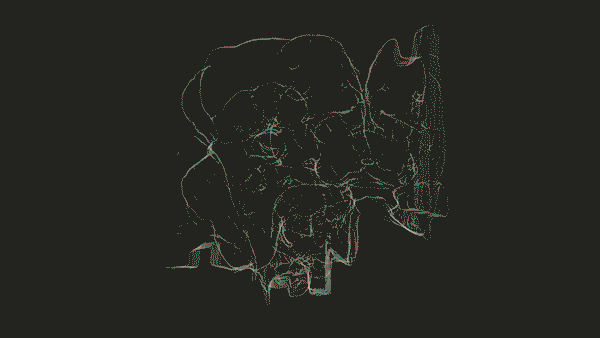Google just created the most detailed image of a brain yet

Scientists have created the most detailed 3D map of an organism brain to date. The mesmerizing threads of blue, yellow, purple and green represent thousands of brain cells and millions of connections found inside the brain of a fruit fly.
This high-resolution map, known as a "connectome," only makes up one-third of a fruit fly's brain but includes a large region involved in learning, navigation, smell and vision. Scientists found over 4,000 different types of neurons, including those involved in the fly's circadian rhythm — or internal clock — that might help researchers learn a bit more about how the insect sleeps, according to the publicly released data.
This map, a collaboration between scientists at Google and the Janelia Research Campus in Virginia, took two years to create. The team started out by cutting a fruit fly brain into extremely thin slices using a hot knife — and then imaging each slice under an electron microscope. Afterward, they stitched the images together to create a large map, tracing the paths of the neurons through the brain, according to the statement.
Related: 3D Images: Exploring the Human Brain
The point of such maps is to reveal something about how specific physical connections in the brain are linked to distinct behaviors. But following each individual neuron in a journey across the brain is painstaking work — and critics note that such maps have not yet led to a major discovery, according to The Verge.
The only organism to have its entire brain mapped this way is the roundworm C. elegans — a wriggly critter that only harbors around 300 to 400 neurons and around 7,000 synapses, or the junctions between brain cells. Other teams have attempted to map the human brain in lower resolution. But considering that the human brain contains 86 billion neurons, creating such a map will likely take some more time.
The new map was published on Jan. 21 in the database BioRxiv, and it has not yet been peer reviewed.
Get the world’s most fascinating discoveries delivered straight to your inbox.
- Inside the Brain: A Photo Journey Through Time
- Check Out These Amazing Super-Detailed Images of Fruit Fly Brains
- Dazzling Images of the Brain Created by Neuroscientist-Artist
Originally published on Live Science.


Yasemin is a staff writer at Live Science, covering health, neuroscience and biology. Her work has appeared in Scientific American, Science and the San Jose Mercury News. She has a bachelor's degree in biomedical engineering from the University of Connecticut and a graduate certificate in science communication from the University of California, Santa Cruz.


